When I started living on the mountain, lumber prices were at an all-time high. The first thing we built was a small chicken coop using store-bought 2x4s and OSB. We quickly learned how cost-prohibitive building would be. I didn’t like being restricted by fluctuating prices, especially while being surrounded by prime timber.
A Big Problem
With a truck full of materials to build an outhouse we headed up the mountain. Curt, being a veritable master at strapping things down, flicked the straps and declared
‘That’s not going anywhere’ but this time, it did.
The whole load shifted back about a foot, threatening to spill out. One of the straps had snapped. We had more but that wouldn’t do it. In an odd decision, we turned the truck around and headed home - up the mountain - in reverse!
It worked and we made it home unscathed having learned another very important and pivotal thing. Getting materials home would be a serious chore.
Finding a Solution
Having built a chicken coop, an outhouse and a tin shed, the path forward was unclear. One day, we sat in the shed waiting out a rainstorm trying to figure out what to do when I brought up an ad I’d seen on Instagram. Bandsaw mills for making your own lumber. Curt thought it was a great idea, and we discussed how long it might take to pay for itself given the current market.
After mulling over a couple of different companies we decided on a North American one with great customer service and great reviews. Knowing it would be seeing lots of use we ordered their biggest one. So big it came on its own trailer. Curt and I don’t have any experience with milling lumber but we’d soon learn.
The Learning Curve
We had the mill shipped to Curt’s parents’ house. It took us two days to assemble it in their garage, which considering it was the biggest one they had and we’d never seen one in person - is pretty good. From there we drove the newly assembled trailer over 500 km to the mountain. It got attention along the drive and we ended up conversing with oldtimers about their own mills!
After a long day on the highway, we got to the dirt road in the dark. I was concerned the trailer might be top-heavy going up the uneven mountain road but it did just fine.
First Lesson: Setting it up
We set up the mill to the best of our ability. The yard is massively unlevel so it was a fight but we figured it out. While the snow began to fly we started making walls for inside the shipping container house.
We ran across a couple of issues starting out. There’s a simple system for lubricating the blade as it cuts into the log. Ours was overdoing it, effectively causing the blade to hydroplane and skate off of its track. It sounds like a dangerous situation, but the safety guards that are in place ensured that the blade didn’t go anywhere. It sure did give me a scare the first time it happened though.
Pushing the massive bandsaw blade through logs and exposing wood grains is crazy satisfying. With every pass of the blade, I got excited to separate the two boards and have a look.
Second lesson: Wood Type
I live in a softwood forest. The trees around me are almost exclusively Larch, Fir, Spruce and Pine which present their own unique challenges. Mainly their pitch. The thick resinous sap of softwood trees sticks to the blade causing problems. I’ve found as the sap builds up, it will cause the blade to wander and cut wavy lines. When it sticks in the teeth of the blade, it becomes entirely ineffective and it’s time to change it out.
When we first started, we didn’t know the tree types aside from softwoods and hardwoods. We learned that not all softwoods are created equal. Douglas fir is very strong (for a softwood) Larch is rot-resistant, and Balsam fir smells good as a Christmas tree but as milled lumber, it smells like a wet dog.
Unfortunately, we used Balsam fir to build most of the original interior. Lesson learned, the hard way.
Third Lesson: Shrinkage and Warpage
We use dead trees exclusively. Mostly standing dead, I like them because they’ve already begun to dry and clearing them out of the woods is good for wildfire prevention. Knowing I don’t have to kill a tree is a definite bonus.
One of the first things we made was thin boards (more like sheets, really) to act as interior walls. It was a good way to learn how to fine-tune the mill and a great lesson in shrinkage. We didn’t wait long enough for the lumber to dry (as we didn’t have the time) and they all shrank creating little gaps.
Not having a planer, we cut boards to the size we wanted which then of course shrank. Not enough to make the wood unusable, just smaller. Another interesting thing came up, warpage. Sometimes even straight trees have invisible twists that only become apparent once they’re milled. There are things you can do to help prevent it, but sometimes you just have to go with it.
Nothing Is Ever Perfect
One thing we (especially Curt) struggled with at the beginning was the imperfections in wood. Every tree is something new. Even storebought, highly processed lumber from the store is wrought with ‘flaws’. We just have to work with and around it, and make the most of the individuality every tree brings.
I often say to him when we’re building something and he’s getting frustrated:
“Art, not science”
Sometimes I need to make dimensional lumber and build a structure, other times I get to make the most of the unique grains each tree has to offer. Having an onsite mill has been a game-changer. It paid for itself in the first year but moreover, the education I’ve gotten from it has been priceless.



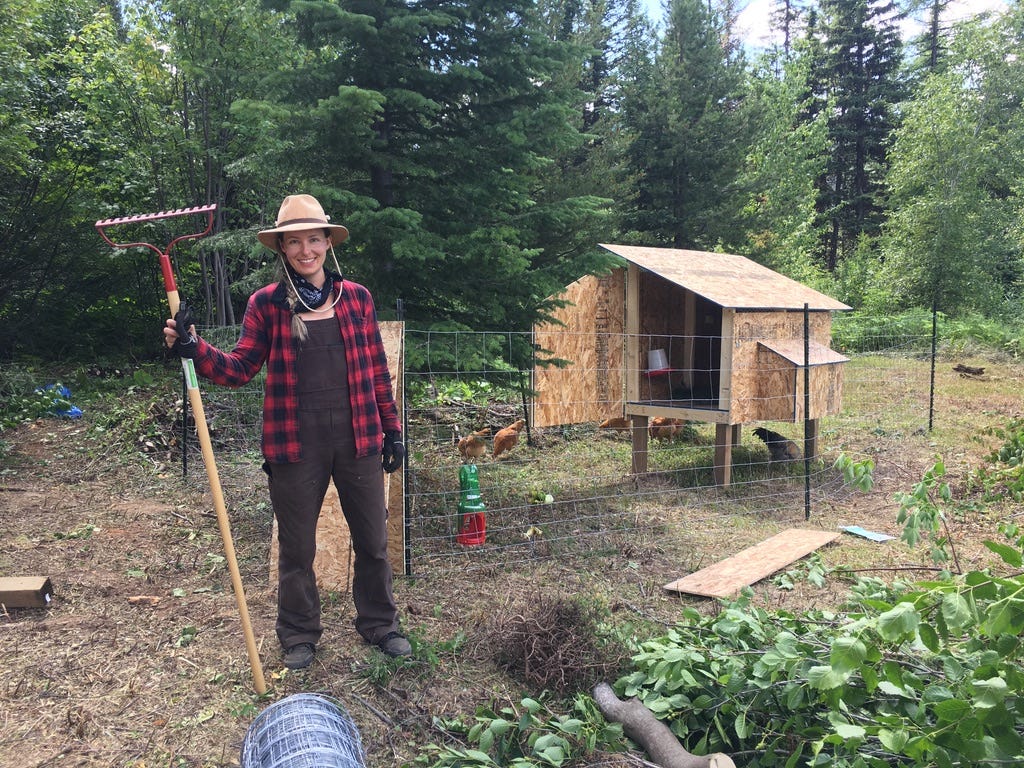
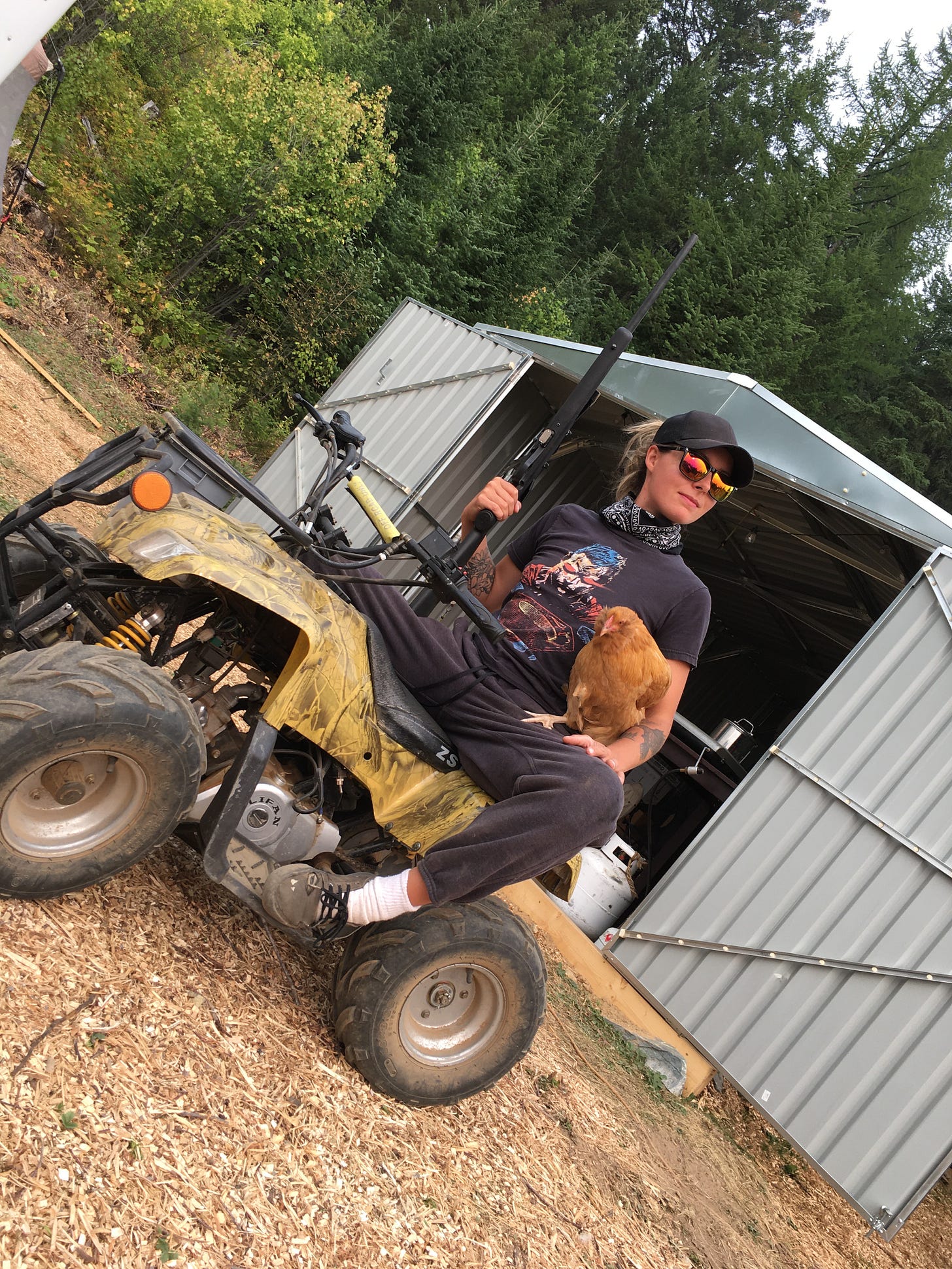
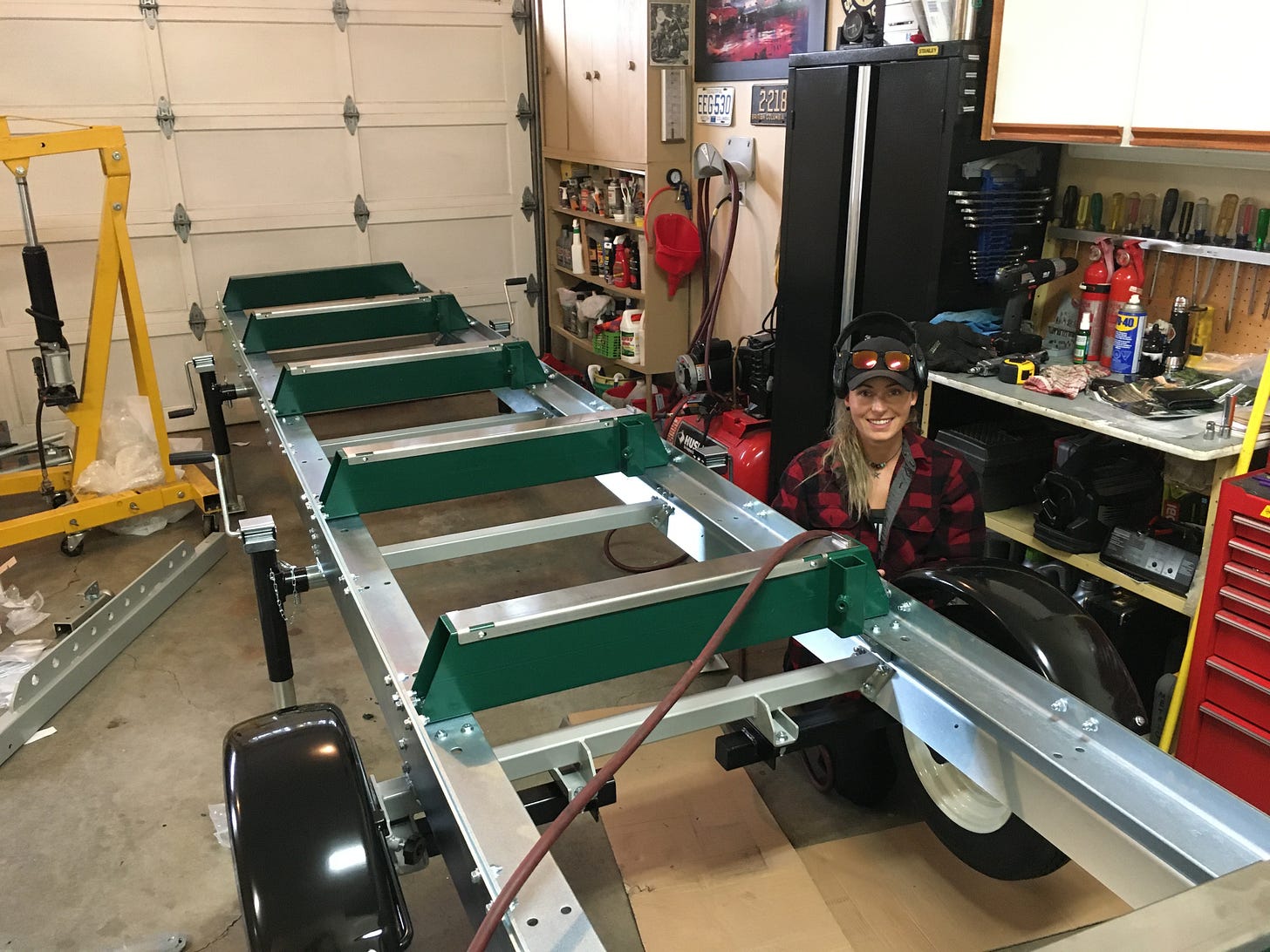

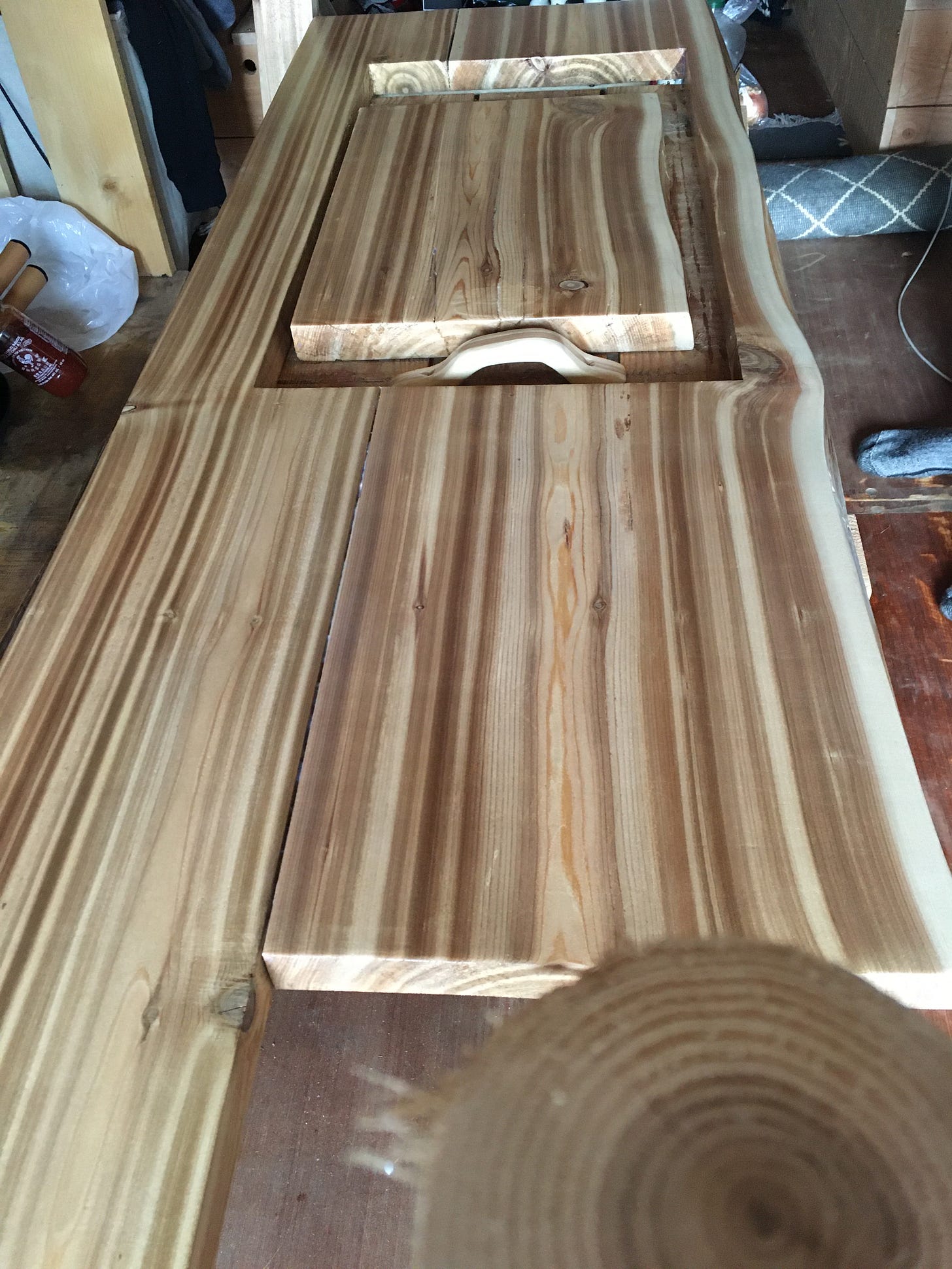
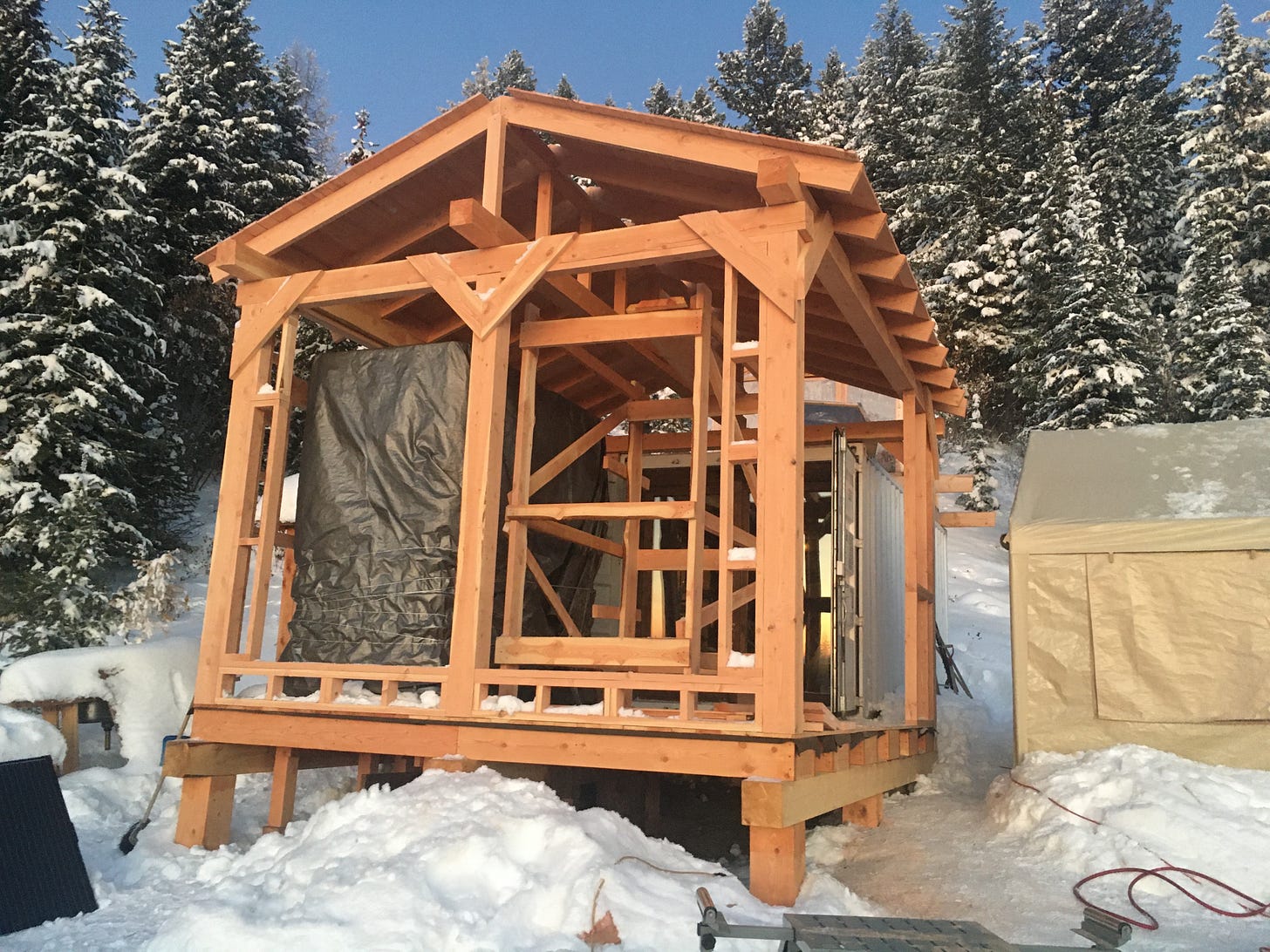
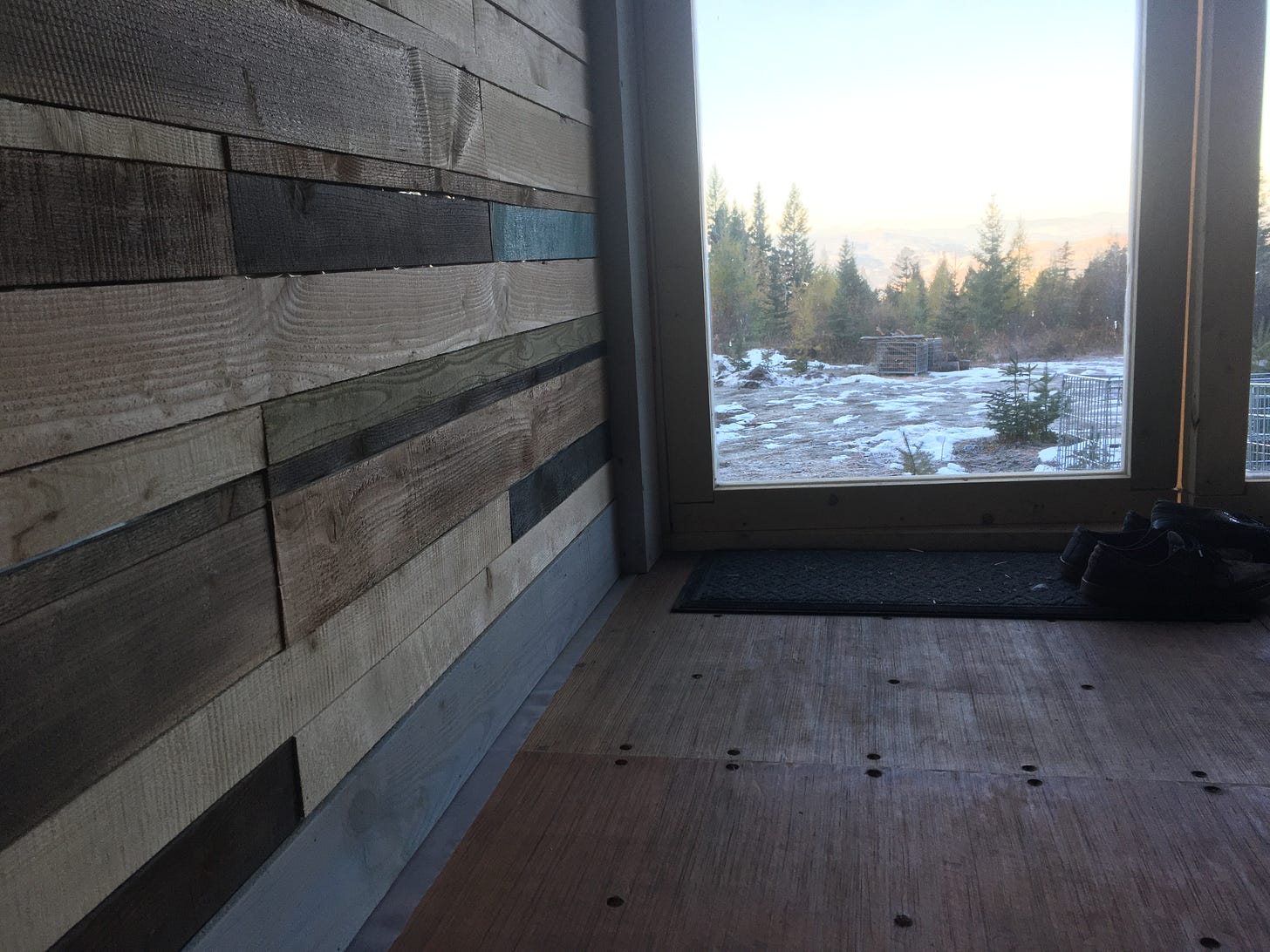


The bandsaw mill i got came with a water drip system for the blade, it was ok, but I found the water didn't do anything for the sap, just helped keep the blade cool. Grant (old timer neighbour) told me that at the end of each cut he would spray the blade (not too much) with a mix of diesel and transmission fluid. This lubricated and cleaned the blade. The first inch or two of a cut would take that off anyways so it won't discolor the wood. I found i would get more cuts out of a blade with it.
Similar to the chain lube on a chainsaw.
Cheers!
Such beautiful artwork, yours and natures. They are both fascinating, yours takes a few strokes of a brush, and natures develops over a few decades. Nice reveal on both perspectives.